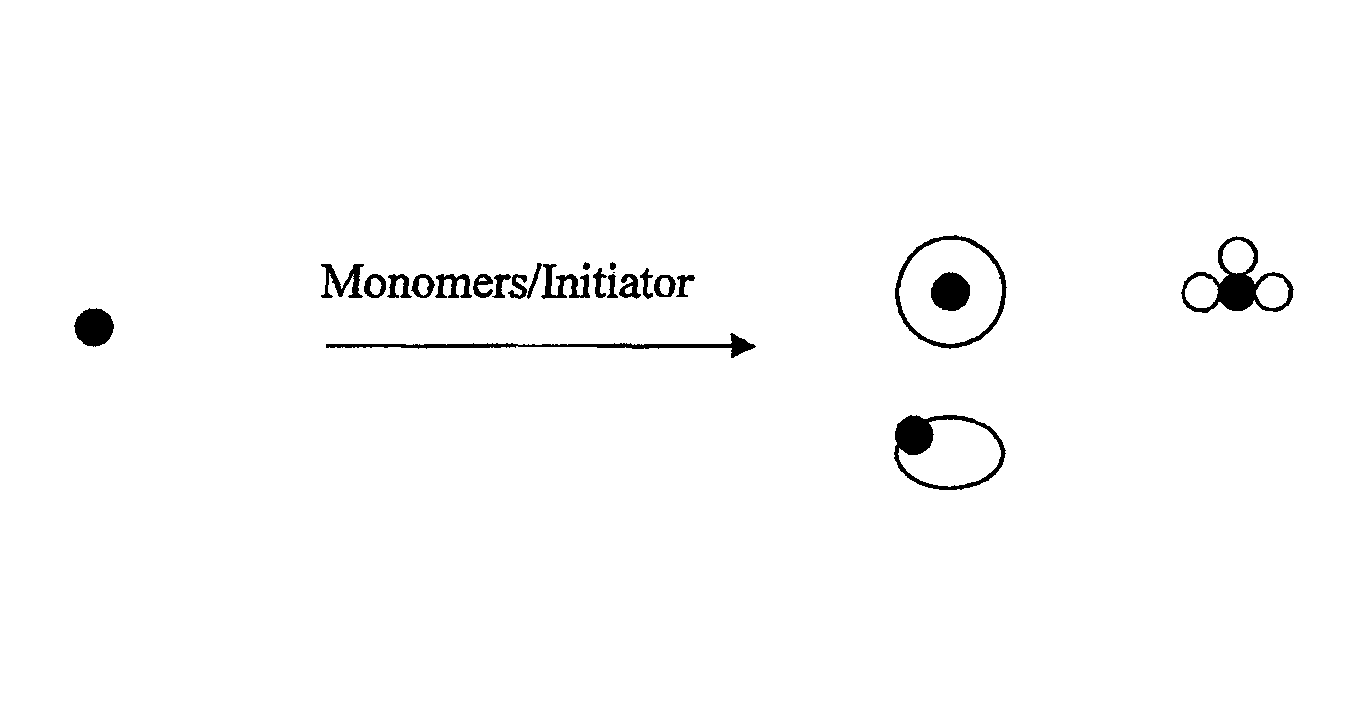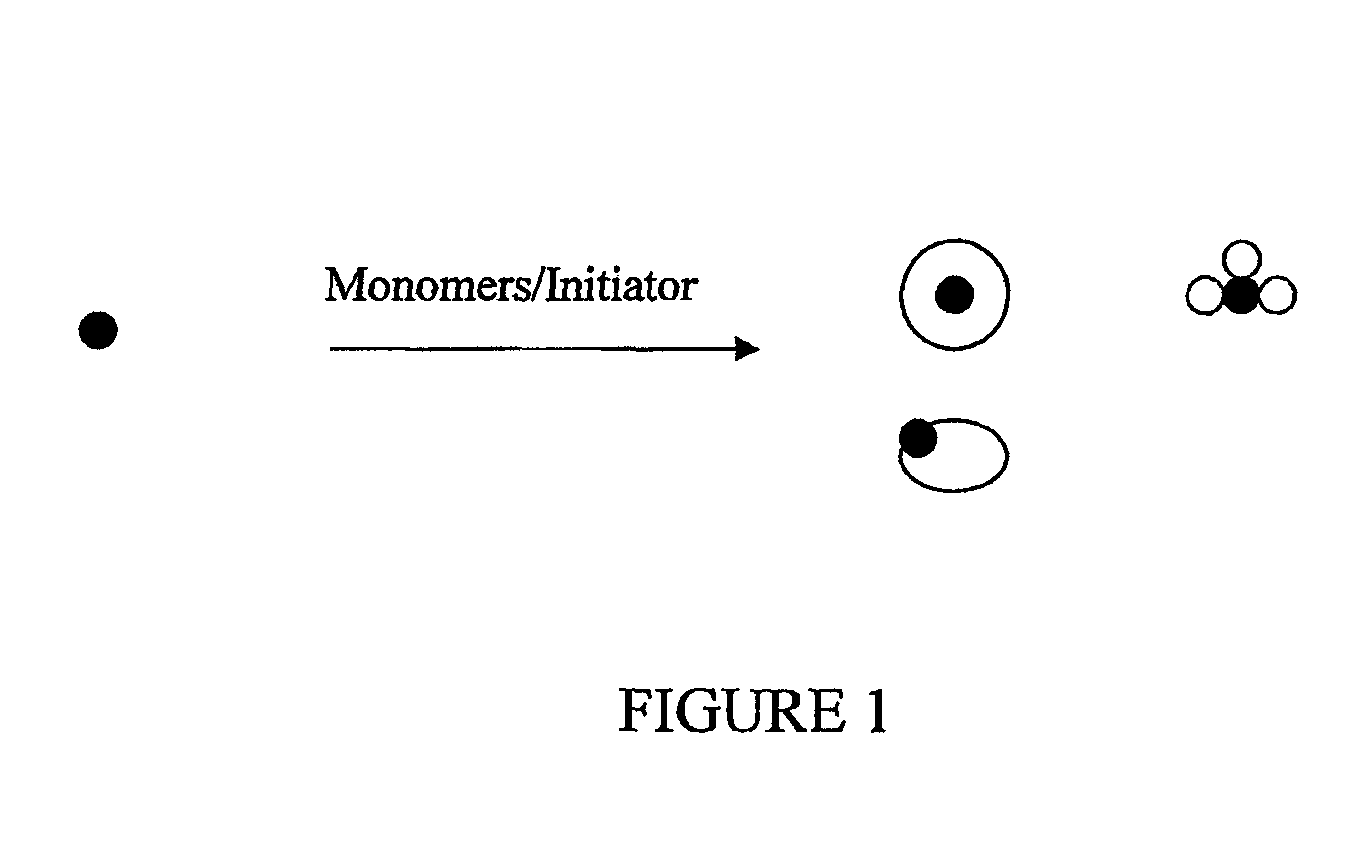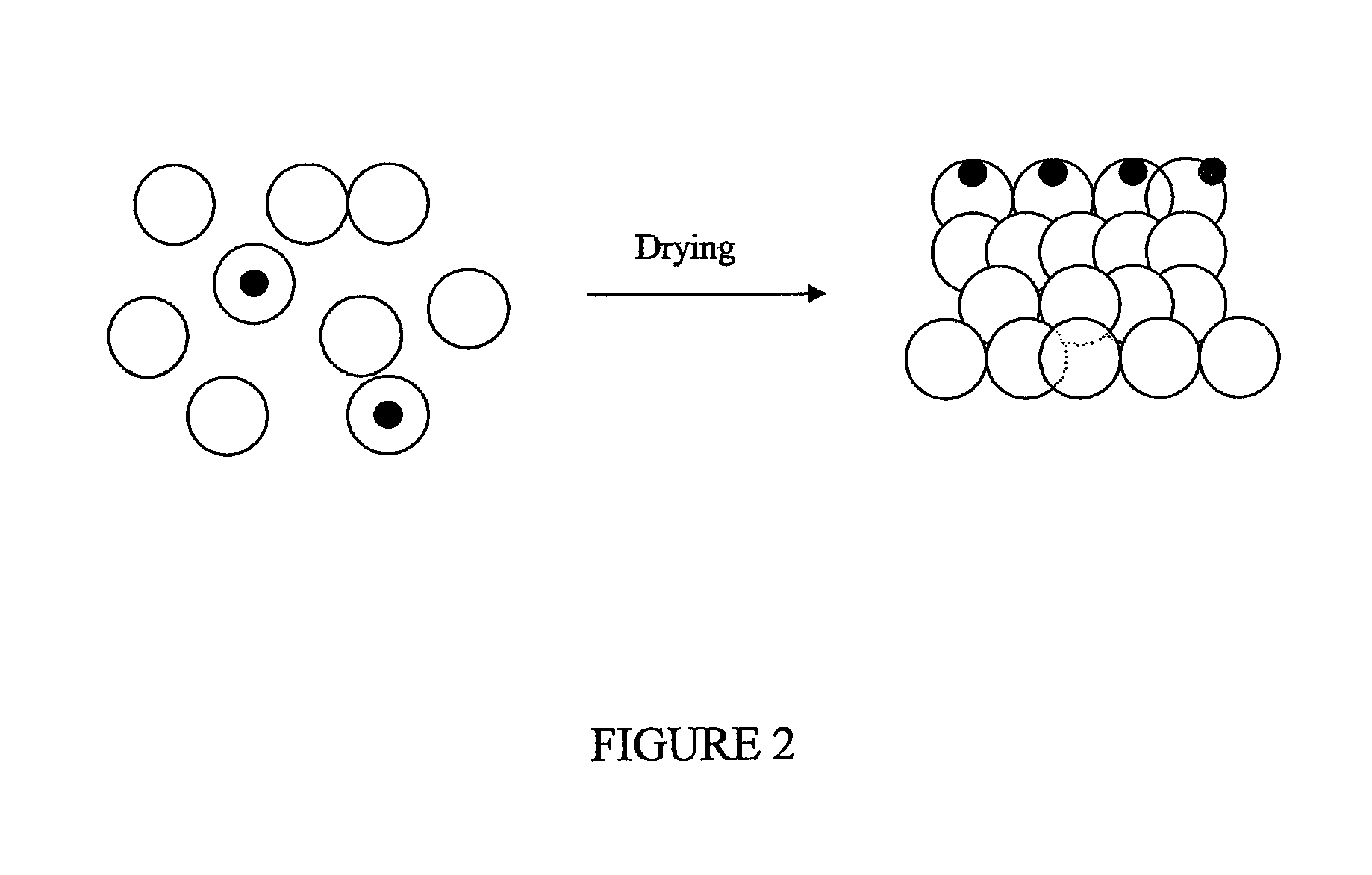Paints with improved water staining and color rub-off qualities
a technology of paints and water staining, applied in the direction of antifouling/underwater paints, textiles and papermaking, dyeing process, etc., can solve the problems of inferior physical properties, difficult formulation of latex paints, and difficulty in maintaining consistent color of latex paints, so as to improve the resistance of latex paints to water staining and color rub-off, excellent scrubability and oil stain release properties
- Summary
- Abstract
- Description
- Claims
- Application Information
AI Technical Summary
Benefits of technology
Problems solved by technology
Method used
Image
Examples
example 1
Preparation of Acrylic Emulsion Polymer Using Silicone Elastomer as Seeds for Polymerization
[0044]The emulsion polymerization is carried out in a four-neck flask under nitrogen purge.
[0045]The reaction flask is equipped with a condenser, a thermometer, an agitator and a feeding pump. The flask is immersed in a temperature controlled water bath maintained at a constant temperature within about ±0.1° C. of the set point. Table 1 shows the ingredients used for the polymerization.
[0046]
TABLE 1PartsComponent(by weight)Initial Charge in ReactorDeionized water46.0Sodium alphaolefin sulfonate 40% (RHODACAL A-246)0.07Sodium bicarbonate0.05Initial SeedSilicone dispersion (Dow Corning ® 841)3.2Monomer MixDeionized water10.1Diacetone acrylamide0.7Sodium alphaolefin sulfonate 40%1.4Ethoxylated phosphate ester 25% (Rhodafac RS 610)1.4Methacrylic acid0.37Methylmethacrylate16.1Butyl acrylate13.8Initiator Solution 1Ammonium persulfate0.09Deionized water0.92Initiator Solution 2Ammonium persulfate0.09...
example 2
Preparation of Acrylic Emulsion Polymer Using Modified Paraffin Wax Emulsion as Seeds for Polymerization
[0049]The process and reaction conditions for this example are the same as used in the Example 1. Table 2 shows the ingredients of the reaction.
[0050]
TABLE 2PartsComponent(by weight)Initial Charge in ReactorDeionized water35.2Sodium alphaolefin sulfonate 40% (RHODACAL A-246)0.07Sodium bicarbonate0.05Initial SeedModified Paraffin Wax Emulsion (Aquacer ® 539, 32%12.2By BYK Chemie)Monomer MixDeionized water7.5Diacetone acrylamide0.7Sodium alphaolefin sulfonate 40%1.1Ethoxylated phosphate ester 25% (Rhodafac RS 610)1.4Methacrylic acid0.43Methylmethacrylate16.8Butyl acrylate16.7Initiator Solution 1Ammonium persulfate0.07Deionized water0.7Initiator Solution 2Ammonium persulfate0.07Deionized water1.4Chaser solutions1) Oxidizing agentt-butylperoxide0.05Deionized water0.42) Reducing agentBruggolite ® FF6M0.05Deionized water0.5Sodium hydroxide solution 50%0.3Deionized water2.5Adipic acid di...
example 3
Preparation of Acrylic Emulsion Polymer Using Silicone Modified Alkyd Emulsion as Seeds for Polymerization
[0052]The polymerization was done with the same conditions as in Example 1.
[0053]
TABLE 3PartsComponent(by weight)Initial Charge in ReactorDeionized water16.2Sodium alphaolefin sulfonate 40% (RHODACAL A-246)0.05Initial SeedSilicone Alkyd Emulsion 40% (WorleeSol SE 420W from45.9Worlee-Chemie)Monomer MixDeionized water5.4Diacetone acrylamide0.5Sodium alphaolefin sulfonate 40%0.9Ethoxylated phosphate ester 25% (Rhodafac RS 610)1.1Methacrylic acid0.2Methylmethacrylate12.7Butyl acrylate12.5Initiator Solution 1Ammonium persulfate0.05Deionized water0.5Initiator Solution 2Ammonium persulfate0.05Deionized water1.1Chaser solutions1) Oxidizing agentt-butylperoxide0.04Deionized water0.32) Reducing agentBruggolite ® FF6M0.03Deionized water0.4Sodium hydroxide solution 50%0.3Deionized water0.3Adipic acid dihydrazide0.1Deionized water1.1Deionized water (rinse)0.3Total100
[0054]The polymer emulsio...
PUM
| Property | Measurement | Unit |
|---|---|---|
| constant temperature | aaaaa | aaaaa |
| temperature | aaaaa | aaaaa |
| temperature | aaaaa | aaaaa |
Abstract
Description
Claims
Application Information
 Login to View More
Login to View More - R&D
- Intellectual Property
- Life Sciences
- Materials
- Tech Scout
- Unparalleled Data Quality
- Higher Quality Content
- 60% Fewer Hallucinations
Browse by: Latest US Patents, China's latest patents, Technical Efficacy Thesaurus, Application Domain, Technology Topic, Popular Technical Reports.
© 2025 PatSnap. All rights reserved.Legal|Privacy policy|Modern Slavery Act Transparency Statement|Sitemap|About US| Contact US: help@patsnap.com



